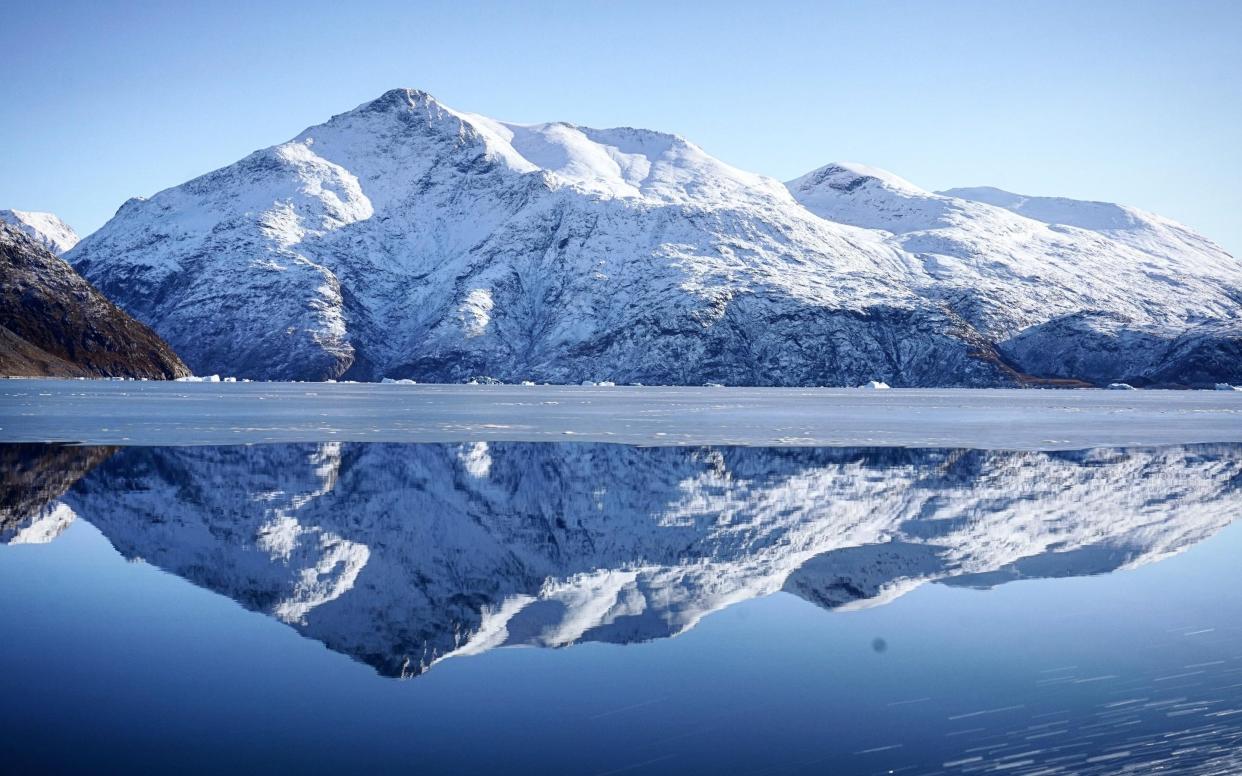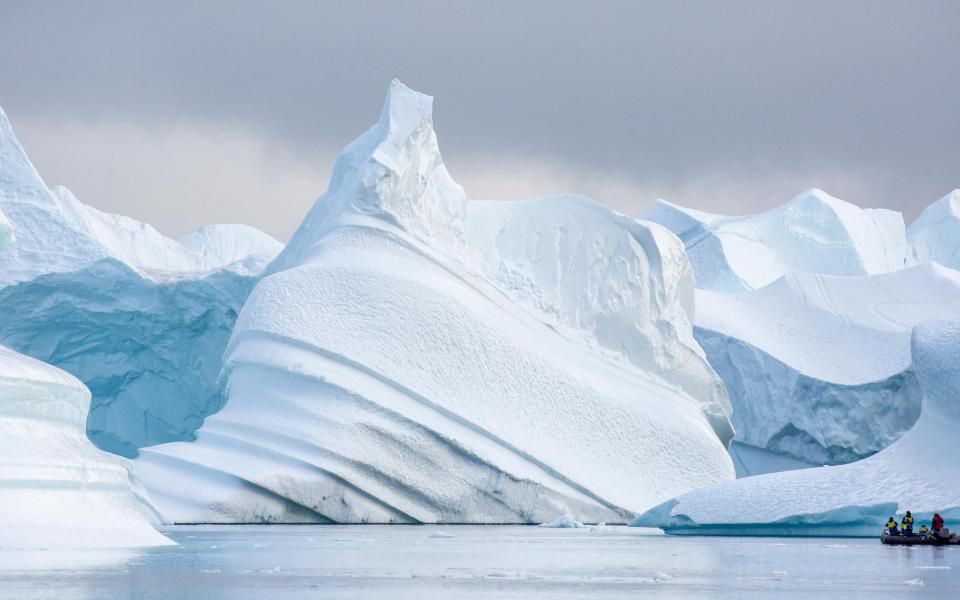On the trail of Tété-Michel Kpomassie in Greenland

Strung around the coast like beads on a necklace, Greenland’s aquamarine lakes gleam in the glacier fields. Diamond dust glittered in the cold air when I strode across the scarps with their tight carpets of crowberries and fireweed. Diaphanous light glowed behind the nearest mountains. The exhilaration of the moment carried everything before it: nuannaar-poq, the Inuit say. “To take extravagant pleasure in being alive.”
I first encountered Greenland chronicler Tété-Michel Kpomassie while sequestered in a tent pitched on 10,000ft of ice. The temperature was 30 below, and although the midnight sun shone brightly through the plastic pane, I had burrowed into the darkness of my sleeping bag to read in a small pool of light cast by a miner’s lamp strapped to my forehead. From the first page, Kpomassie’s superb volume An African in Greenland both drove out the cold and did what I most like a travel book to do. It held up a mirror, and the Arctic reflected back the world.
The first chapters of the book, written in French and published in Paris in 1981, deal with the author’s childhood in rural Togo. Kpomassie records how, as a small boy, he fell out of a tree while gathering coconuts and, after a purification ceremony by the High Priestess of the Python, was destined to be initiated into her cult. The prospect was so terrifying that he dreamt of escape – to Greenland, which he had read about in a missionary bookshop in Lome. Green- land was, to the young Kpomassie, the antithesis of the jungle – white, frozen and python-free.
When he was 16, he took off. It took him eight years to reach Greenland. In 1965, Kpomassie, an Arctic greenhorn, arrived in Julienhab, now Qaqortoq. At 5ft 11in, he towered above the Inuit, and the national broadcasting station announced his arrival on the evening news. “I had started on a voyage of discovery,” he wrote, “only to find that it was I who was being discovered.”
He described his experiences with artless ingenuity, combining comicality, like all the best writers, with a sense of the sad absurdity of life. When his drunken host urinated in his rucksack, soaking all his clothes, he was unperturbed. In his book – a modern classic (my edition was translated by James Kirkup) – the author perfectly captures the pared-down existence of Greenland and the grace of its people under pressure. The Inuit competed to host him, and he immersed himself in their lives, learning both language and customs and acquiring a girlfriend.
The west of Greenland was on the cusp of change (though Home Rule from Denmark was as yet a dream), and Qaqortoq had opened its first cinema, though the projectionist halted the film every 10 minutes for a muffled voice to translate the latest batch of Danish subtitles into Inuktituk over a loudspeaker. The Togolese Odysseus moved north, wintering in a turf hut entered through a tunnel on all fours. He learnt to drive dogs, perched on a sledge alone in the darkness, and came to see the patterns that had governed Inuit life for centuries.
“In the eyes of an Eskimo hunter,” he marvelled, “the Arctic world with its vast, frozen expanses, its barren, snowy peaks and great bare plateaux – all that drab, white, lifeless immensity of little interest to an African like me – becomes a living world.”
Greenland is four times the size of France, and its central ice sheet covers 80 per cent of it. At the edges this glimmering sheet, a protagonist in the drama of climate change, flows down like the icing in MacArthur Park, eventually snapping off into icebergs. Not withstanding the Big Melt, the traveller can still feel Kpomassie’s Greenlandic magic, especially on the lonely east coast where there is no land access to almost a million square kilometres.

You must either travel by boat, or fly in from the capital, Nuuk, or from Iceland. I once joined a 10-day Quark cruise from Murmansk to Reykjavik via east Greenland (no dressing for dinner, no slot machines and no entertainment bar lectures on Arctic flora and fauna; quarkexpeditions.com). Rock faces bounced back the boom of calving glaciers as we sailed past pleated white cliffs batting away the sun’s heat. I had one of my young sons with me when I was last at Ittoqqortoormiit (population 350), the most isolated settlement in east Greenland. Small boys ran out of multi-coloured houses to play with him, linguistic difficulties mediated this time not by a projectionist’s running commentary, but by garbled references to the previous week’s Manchester United line-up.
“But your place is here with us,” Kpomassie’s friend said when the author announced his imminent departure. “The purple disc sank little by little beyond the line of the horizon,” he wrote of his last autumn sunset in Greenland. “For a few moments longer the brindled sky was still painted with wide and luminous streaks, flaming on the face of the waters, turning to violet on the mountain tops, orange or grey above our heads.”

